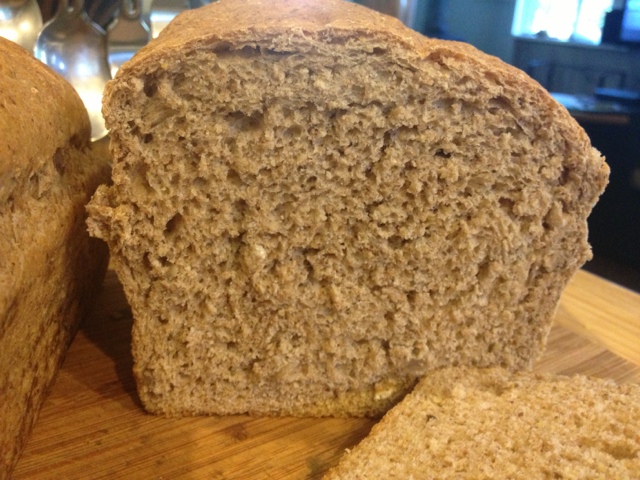I love it when recipes work out in my (our) favor. Took my favorite scone recipe and adjusted it to be casein (dairy protein) free, a little more wholesome made from 100% whole wheat pastry flour with apple for added yummy factor. I doubled this recipe to get 1 scone pie to eat now and 1 to eat later. I put it in the freezer.
Ingredients
- 1/4 cup light brown sugar
- 2 cups whole wheat pastry flour
- 2 teaspoons baking powder
- 1/2 teaspoon baking soda
- 1/4 teaspoon salt
- 1 teaspoon ground cinnamon
- 1/3 cup softened coconut oil (you can sub earth balance or smart balance too)
- 1 apple, peeled and shredded (about 1 cup of apple shreds)
- 1/3 cup Almond Milk (could sub any nut milk or coconut would work too)
- 1 egg yolk (hold the whites for later) (for a no egg version leave out the egg and increase the nut milk to a 1/2 cup)
Instructions
- Preheat your oven to 425ºF and line a baking sheet with parchment paper.
- Place brown sugar in a large bowl. Whisk in the flour, baking powder, baking soda, salt, and cinnamon until everything is well-combined. Slightly warm the coconut oil so it's mildly soft and add it using a fork or pastry blender, cut it in until the mixture resembles coarse crumbs.
- Stir in the apple and almond milk, until the mixture starts to come together. It should be a little crumbly, but fairly easy to handle (not sticky) and easy to form into two balls. If it is too wet, add a little flour, too dry, sprinkle in some more milk alternative. Mine was more on the wet side and not so crumbly side but I've had it on all levels of the scale and it has cooked up just fine.
- Make into 1 or 2 balls. I made this into 1 larger ball and proceeded as follows: gently flatten them into a disk that are about an inch to an inch and a half high on a baking sheet. Sprinkle the scones with the tablespoon of sugar or even a little more if desire mixed with cinnamon.
- Cut or score the disks into 8 triangles (like a pizza), and bake for10-12 minutes, or until the scones begin to take on a nice golden brown hue on the tops and edges. I like to keep the scones touching as they bake for a pull-apart effect and tender middle. I gently separated them as they did slightly rise.
- Once out of the oven I let them cool for about 10 minutes. Then I poured icing all over the top. To make the icing just mix a tablespoon of almond milk with about 1 cup powdered sugar until you get the consistency you enjoy. It should be thick but pourable. Pour all over the top of the scones and let it harden slightly.
- Enjoy!! (If you are freezing them, let them cool and then freeze. Step 6 should happen after you reheat on the spot so they don't end up soggy.)



